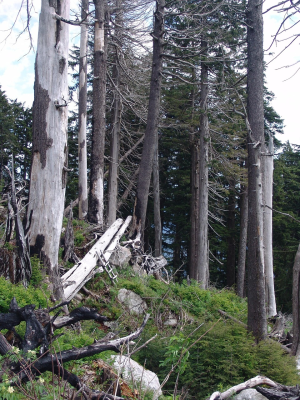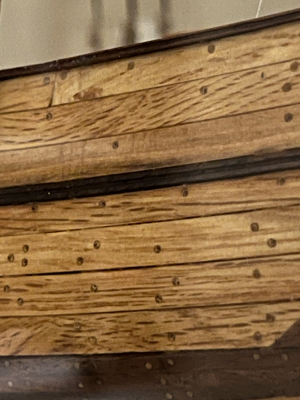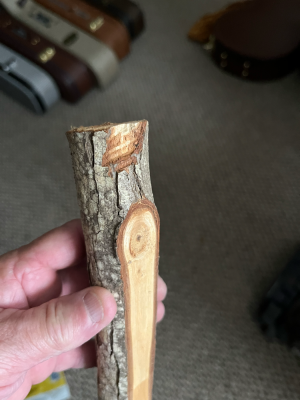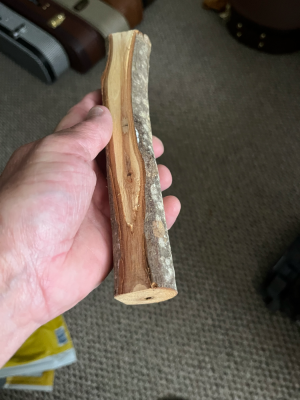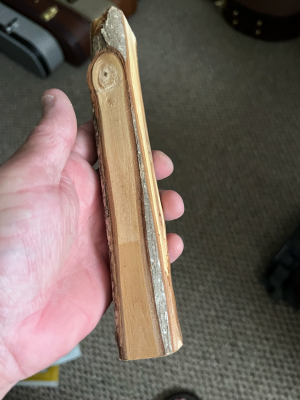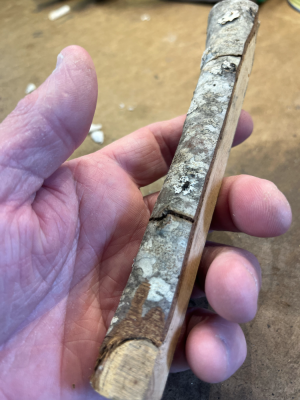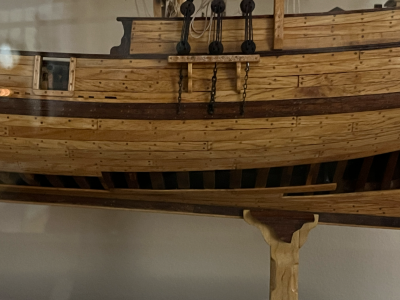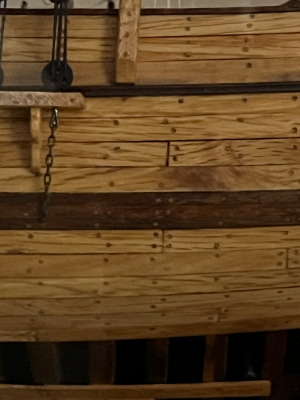- Joined
- Dec 1, 2016
- Messages
- 6,338
- Points
- 728

the wood called "pearwood" used in kits is not pearwood not even remotely related to European pearwood or what we call Swiss Pearwood
the wood is actually African Pearwood also referred to as Moabi or Djave Nut. scientific it's Baillonella toxisperma
true Boxwood is not even a tree it is a shrub and only small pieces can be obtained the biggest piece i have ever had in my collection was a log 4 inch diam by a clear 9 inches long. so i highly doubt these kits that claim are boxwood are not boxwood not even related to true boxwood.
once i figured out the cost to build a 1/4 scale frigate out of true boxwood. At the going rate the wood along would have cost $3,500.00
so how can you buy a "boxwood" kit at $1.200
It’s a tricky balance: we want honesty in labeling, yes, but also a little flexibility in understanding how nature and the lumber trade actually work. Maybe more detailed info from kit makers, like species name and country of origin, would help clear the fog.
i have been involved in the lumber trade for 35 years and handled thousands of board feet of lumber both domestic and exotic. My brother had a degree in forestry. It bugged the crap out of him when i would ID a tree as OAK he would say what Oak? Red Oak, pin Oak, swamp oak, black oak, white oak, Beech, you know how may types of Oak there are?
the names of wood is very confusing i went to a local saw mill down in Amish and asked for Beech oh do you mean Hackberry don't ask for Maple because there is a large list of wood that falls under Maple. Ask for Ghost wood what do you think you would get?
If a person is paying a premium for a boxwood and pearwood ship model, it damn well better be made of boxwood and pearwood.
it matters between the builder and his client. It has happened to me where i was asked to produce a timbering set for a model out of boxwood and rather than pull a bait and switch and use Castello Boxwood and say nothing i quoted $8.600.00 for Buxus sempervirens because the wood is rare, very expensive and hard to find and you can only find it in small heart check logs which results in a lot of waist.
so i gave the client a choice of a wood that looks like boxwood for $700.00
in the case of kits made for a hobby i do not think it matters what the wood is called. but if you built a kit that claimed it is boxwood and put that model in an art gallery as the material being Boxwood that is a lie.
Wondering, as far as ship kits go, what are the differences between pearwood and boxwood. Seems there’s a fair difference in price for kits that offer both as an option.
differences in price come into play because it is possible the claim of Pearwood and Boxwood may not be actual pearwood or boxwood but whatever the wood is it is a step up from common Basswood or other less expensive woods. So you paying for a better quality wood whatever it actually is.
the wood is actually African Pearwood also referred to as Moabi or Djave Nut. scientific it's Baillonella toxisperma
true Boxwood is not even a tree it is a shrub and only small pieces can be obtained the biggest piece i have ever had in my collection was a log 4 inch diam by a clear 9 inches long. so i highly doubt these kits that claim are boxwood are not boxwood not even related to true boxwood.
once i figured out the cost to build a 1/4 scale frigate out of true boxwood. At the going rate the wood along would have cost $3,500.00
so how can you buy a "boxwood" kit at $1.200
It’s a tricky balance: we want honesty in labeling, yes, but also a little flexibility in understanding how nature and the lumber trade actually work. Maybe more detailed info from kit makers, like species name and country of origin, would help clear the fog.
i have been involved in the lumber trade for 35 years and handled thousands of board feet of lumber both domestic and exotic. My brother had a degree in forestry. It bugged the crap out of him when i would ID a tree as OAK he would say what Oak? Red Oak, pin Oak, swamp oak, black oak, white oak, Beech, you know how may types of Oak there are?
the names of wood is very confusing i went to a local saw mill down in Amish and asked for Beech oh do you mean Hackberry don't ask for Maple because there is a large list of wood that falls under Maple. Ask for Ghost wood what do you think you would get?
If a person is paying a premium for a boxwood and pearwood ship model, it damn well better be made of boxwood and pearwood.
it matters between the builder and his client. It has happened to me where i was asked to produce a timbering set for a model out of boxwood and rather than pull a bait and switch and use Castello Boxwood and say nothing i quoted $8.600.00 for Buxus sempervirens because the wood is rare, very expensive and hard to find and you can only find it in small heart check logs which results in a lot of waist.
so i gave the client a choice of a wood that looks like boxwood for $700.00
in the case of kits made for a hobby i do not think it matters what the wood is called. but if you built a kit that claimed it is boxwood and put that model in an art gallery as the material being Boxwood that is a lie.
Wondering, as far as ship kits go, what are the differences between pearwood and boxwood. Seems there’s a fair difference in price for kits that offer both as an option.
differences in price come into play because it is possible the claim of Pearwood and Boxwood may not be actual pearwood or boxwood but whatever the wood is it is a step up from common Basswood or other less expensive woods. So you paying for a better quality wood whatever it actually is.



